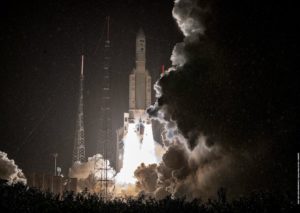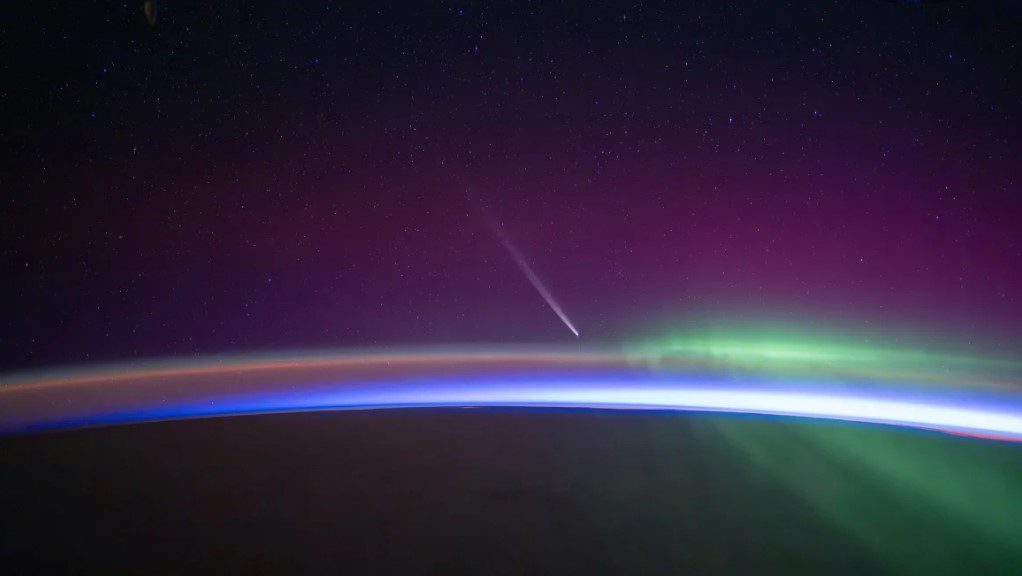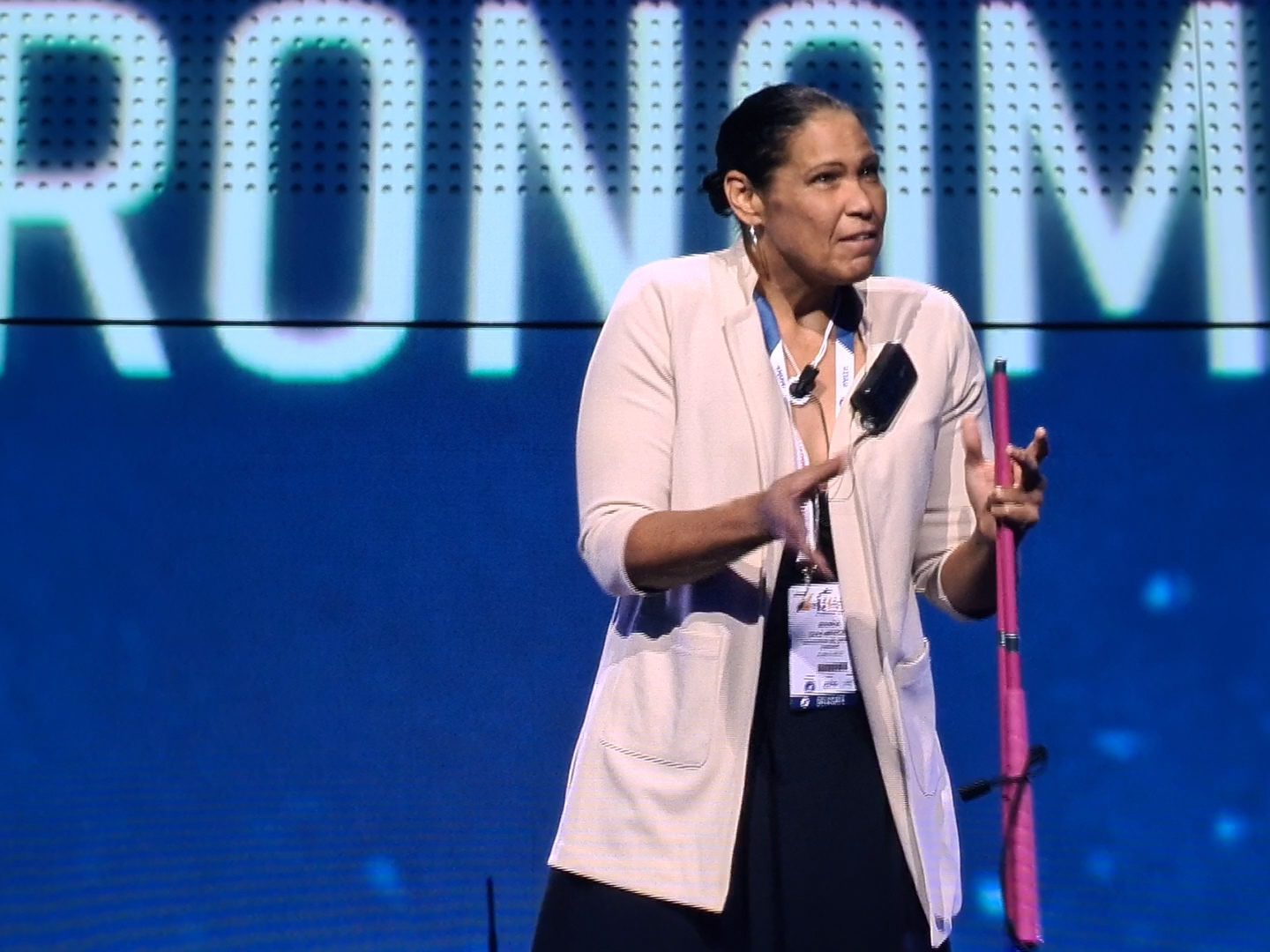Having been delayed one day by a ground systems issue, and then a further one hour’s wait to check out a pressurisation issue on its main stage, at 0210 GMT on 24 October, an Ariane 5 ECA+ successfully launched from Guiana Space Centre, Kourou, French Guiana. It was carrying SES-17 and Syracuse 4A which combined with their adaptor to make this the heaviest ever payload lifted to date. In addition, the Ariane 5 ECA+ rocket used for this VA-255 flight had a 1.5 m cylinder attached to the payload fairing increasing the rocket’s total height to 56.3 m, making it the tallest Ariane 5 to ever fly.
Weighing in at 6,411 kg, the Thales Alenia Space-built SES-17 is a commercial high-throughput communications satellite being launched for the satellite operator SES. Using its Ka-band payload offering 200 spot beams, along with Digital Transparent Processor technology to allow easy channel switching, it will be the cornerstone spacecraft of a proposed Ka-band network for aviation customers.
The 3,852 kg Syracuse 4A spacecraft is a military communications satellite being launched for French Ministry of Defence. It was built jointly by Airbus Defence and Space and Thales Alenia Space which is the bus manufacturer for this spacecraft. It will provide X- and Ka-band services to the French military.
There was considerable interest in this launch on account that it was the last flight of an Ariane 5 ECA+ rocket before its planned launch of NASA’s US$10 billion successor to the Hubble Space Telescope, the James Webb Space Telescope (JWST), which is due to fly in December. There had been a specific concern over the fairing which had been modified after a number of Ariane 5 launched spacecraft had reportedly been damaged after a new fairing design had been introduced.
Post Script: Ahead of its launch, the controversy over the name of the James Webb Space Telescope (JWST) goes on. James Webb was NASA Administrator between 1961 and 1968, key years of success during the Mercury, Gemini and Apollo human spaceflight programmes. There had been pleas by some that its name be changed after James Webb was revealed to have been purging gay (homosexual) employees from the ranks of the US Government civil service during his roles within government. Nevertheless, in a “culture wars” backlash, some have criticised this as yet another attempt to disregard the achievements an individual who may have had views which are deemed to be no longer acceptable today. NASA has announced that, for the time, being the name of the spacecraft, which was originally named in 2002, will remain, but that a full investigation into Webb’s history will be undertaken.







